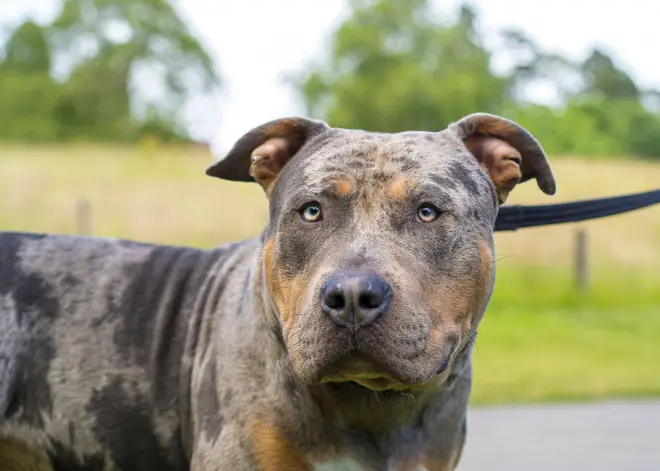
Ben Kentish 10pm - 1am
11 September 2023, 11:54

XL bullies could be banned after an 11-year-old girl was mauled in Birmingham.
The child was attacked by the powerful breed and footage showed how bystanders had to intervene and fling themselves at the dog so she could escape.
It then attacked adults nearby, jumping and biting a man who was unable to flee.
It prompted home secretary Suella Braverman to call XL bullies "a clear and lethal danger to our communities, particularly children" and say she had commissioned advice over whether it should be banned.
Here is everything you need to know about the breed - and what its legal status is.
An XL bully is a larger from of the American Bully, a compact and muscular dog.
It has a distinctively large and broad head.
Read more: Home Secretary 'pushing for XL Bully ban' after crazed dog mauls 11-year-old girl in Birmingham

They appear almost like a big and powerful bulldog.
The American Bully Kennel Club describes them as a breed "exhibiting confidence, a zest for life, along with an exuberant willingness to please and bond with their family, thus making the American Bully an excellent family companion".
Read more: Two XL bully dogs shot dead after killing 22 pregnant sheep and injuring dozens more
It says they are gentle and "extremely friendly with strangers" and "great with kids", while aggression is uncharacteristic of them.
The bully is derived from the American Pit Bull Terrier, with influence from American and English bulldogs.
The breed has only recently been registered and recognised by different dog groups - the United Kennel Club first recognised it in July 2013.

XL bullies can grow above 20 inches tall while females grow over 19 inches.
They are said to have a bite force of some 300 PSI (pounds per square inch). The average dog bite is around 230 PSI - significantly less than some of the bigger breeds like mastiffs or Kangal.
They are increasingly making headlines for being the culprits behind dog attacks.
Policing minister Chris Philp told LBC in July that seven people had been killed by the breed in the last year.

"Somewhere between a quarter and a half of all dogs that police have had to seize [are American Bully XLs]," he said.
"The problem has arisen in the past few years I think, it's quite a recent thing."
South Yorkshire Police said in July that dangerous dog incidents have increased by more than 50% in the last five years and in January last year XL bullies accounted for 25% of the dogs they seized.
Assistant Chief Constable Dan Thorpe said: "A woman in South Yorkshire bought two XL bully dogs, believing them to be gentle giants. Those dogs turned on her in her home and caused fatal injuries."
The 11-year-old girl's mauling has horrified the country and prompted the newest wave of calls for a ban.
Earlier this month, two XL bullies were shot dead by a farmer after killing 22 pregnant sheep and injuring dozens more in North Wales.

Police seized 15 dogs and arrested a second person after a 37-year-old father was mauled to death by an XL bully in Leigh in May.
Two years ago, 10-year-old Jack Lis was attacked by a bully near Caerphilly, Wales. CCTV footage later emerged of the dog lunging at pedestrians days before the killing.
A spokesperson for the Dogs Trust said research had shown that "no breed of dog is more likely to be aggressive than another".
The breed is perfectly legal to own but advice on whether it should be banned has been commissioned.
The Department for Environment, Food and Rural Affairs (Defra) decides which dogs are banned.
There are just four illegal breeds - the Pit Bull Terrier, Japanese Tosa, Dogo Argentino and Fila Brasileiro.
A couple of factors could complicate any decision to ban them.
The dog is not recognised as a breed in its own right by the Royal Kennel Club.
There are also concerns about the practicalities of it. If they were outlawed, families living with perfectly trained XL bullies would have to give them up - and a decision would need to be made on what happens to those dogs.
Defra has said that community protection notices can compel dog owners to address their animals' behaviour, or, at the extreme end of the law, face up to 14 years in prison or be banned from owning pooches under the Dangerous Dogs Act.